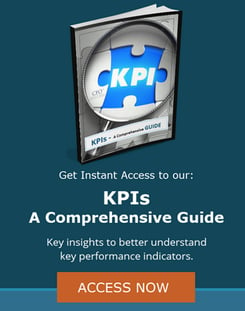
Take a second to think about your company’s key personnel - your CEO, CFO, CIO, Controller, etc. Consider everything they bring to the table and the responsibilities they hold as well as the knowledge they’ve accumulated about your business and industry. Now, imagine that they suddenly disappear.
Would Your Company Survive?
For most businesses, the answer is “probably.” But, having to replace key personnel with little to no warning would be an incredible hardship, and you may not come away from the experience unscathed. You can avoid many of the costs and issues associated with losing key personnel by putting together a thorough succession plan.
What is a Succession Plan?
Succession planning is making plans for the execution of smooth transitions in leadership positions. It’s your company’s strategy for identifying and developing the talent that will step into leadership positions in the future.
Change is inevitable. People will retire, resign, get fired, get sick, pass away, or have other life events that take them away from work. Your company’s succession plan will ensure that it is ready to deal with any contingency.
Even though succession plans are vital, many businesses put them on the back burner. According to an XpertHR survey, 40 percent of organizations don’t do succession planning. A recent Deloitte study reports that over half (56 percent) of executives believed their companies were not ready to meet certain leadership needs.
Why You Probably Need One
There’s a reason why these figures are important and relevant to succession planning. Each day, roughly 10,000 Baby Boomers become eligible for retirement.
It has become more vital than ever that companies identify high-potential Gen Xers, Millennials, and Gen Z’s to become part of the leadership pipeline. The truth is if you aren't grooming your top talent for better roles, they're likely going to leave for greener pastures, meaning a company that does recognize their value.
Here are some of the benefits of creating a succession plan for your business:
- Disaster-proofs your business
You’ve put a significant amount of work into launching and building your business. You likely also have some safeguards in place to protect it - things like data backups and insurance plans.
Succession planning is another way to protect your business from vulnerabilities. If a key person retires or leaves for some other reason, your succession plan will help ensure continuity as you work through a transition.
Otherwise, a chaotic change could result in major disruptions in efficiency and productivity, a lack of confidence among employees or shareholders, a damaged reputation with clients, and lost institutional expertise and legacy knowledge. It's better to avoid any of those potential disasters.
- Identifies your most qualified leadership candidates
When you create a succession plan, you have the benefit of a deep dive analysis of your current staff. First, you’ll identify positions that are critical to your company’s success (they might not all be executive level). Next, you can locate any internal candidates that have the skills, desire, and values to step into those roles.
If you wait until the need arises to look for the right talent, you might be in trouble. According to the Society for Human Resource Management, it takes an average of 42 days to fill an open position, but your mileage may vary. And then you have the learning and productivity curve that comes afterward.
- Creates structure for professional development
After your company identifies that several people are interested in pursuing leadership positions, you can begin identifying any competency or skills that need addressing. Some of these professional development opportunities might come in the form of mentoring, coaching, courses, or a gradual increase in responsibilities.
Many employees yearn for companies to invest in their careers through development programs. So, your succession plan can easily be used as an employee retention tool.
According to the Association for Talent Development, 87 percent of organizations face challenges locating skilled candidates. This approach allows you to identify and groom your top talent in-house.
- Stimulates Intercompany Communication
When you engage in succession planning, your company is laying the groundwork for its future. Since many of your executives and department heads will be involved, this can facilitate conversations about long-term and strategic plans.
Further, the talent you select to possibly move up the ranks will have more involvement in everyday and strategic processes. They might be encouraged to ask more questions or approach senior staff with innovative ideas.
Your Succession Plan Strategy
Your company’s succession plan will be its own. You have the opportunity to shape something that meets your unique needs, fits with your strategic plan, and ensures the continuity of your culture and high level of service. Some helpful tips that can help you get to the finish line include:
- Be Proactive
Don’t put off developing your succession strategy any longer. The best time to plan for an emergency is when you aren’t facing one. Take the time now to evaluate the key positions in your company and determine which ones you need to include in your plan.
With each position, gather feedback from the person currently in it as well as those who work alongside it in regard to a list of core competencies for success.
- Be Transparent
Employees like to know that their company has a plan in place to deal with sudden changes in leadership or other key positions. It not only gives them peace of mind but also some information about potential advancement opportunities.
When you are transparent with your succession plan, employees know what skills and competencies they need to develop to be considered for future career options.
- Be Innovative
There are plenty of ways that you can get talented employees ready to step into key roles. You might pair them up with a mentor or give them some special projects. But, don’t be afraid to think outside the box and get inventive.
Maybe there’s a new digital training program that is relevant to the role. Perhaps working on a cross-functional team will help build some necessary competencies. Or, there might even be an opportunity for the employee to “fill in” temporarily in specific roles as they are being groomed.
- Be Thorough
You may already have an incredible backlog of talent in your organization, but some of the most promising candidates haven’t been identified yet. Unfortunately, the challenges of day-to-day operations can overshadow the potential that is right in your midst.
On the other hand, it’s often too easy to promote someone to a leadership position based on a single metric when they may not have the qualities for success in the new role. Instead, take the time to look for employees that set themselves apart through a willingness to learn and take on larger roles.
- Be Consistent
Your company’s succession plan should be consistent. Employees need to know that they’ll be treated fairly when it comes to matters of development and promotion. If you create a plan and then abandon your strategy when there is an opening, employees will begin to question your credibility.
If you want to keep your options open, be honest when you create your plan. Let your in-house talent know that you value them and are open to promoting from within when there are opportunities. This will keep them engaged as you prove that your succession plan is working in practice as opposed to only in theory.
How to Choose the Right Succession Plan
Every company will approach succession planning just a bit differently. Your company’s culture, organizational structure, and long-term goals will all play a role in how a succession plan comes together as well as the focus of the plan.
Whether you choose to replace key positions internally or have an alternative strategy, staffing changes can create a ripple effect. Moving one person up the ladder will generally create another vacancy that you’ll need to fill. These are challenges, but they aren’t insurmountable.
CFO Selections specializes in financial consulting services to meet your exact needs. We provide interim, part-time, and project-based financial executives that can help with these transition periods.
Contact us today to learn more about developing a winning succession plan and how our services can help.
About the Author
 Mark Tranter leads the business development and marketing efforts at CFO Selections®, which he joined in 2006 after co-owning a successful executive search firm. He organizes, hosts, and attends a large number of networking events, ranging from one-on-one meetings to roundtables, seminars, and forums.
Mark Tranter leads the business development and marketing efforts at CFO Selections®, which he joined in 2006 after co-owning a successful executive search firm. He organizes, hosts, and attends a large number of networking events, ranging from one-on-one meetings to roundtables, seminars, and forums.
In this role Mark speaks with many business owners and executives who guide their organizations through transitions and transactions.





